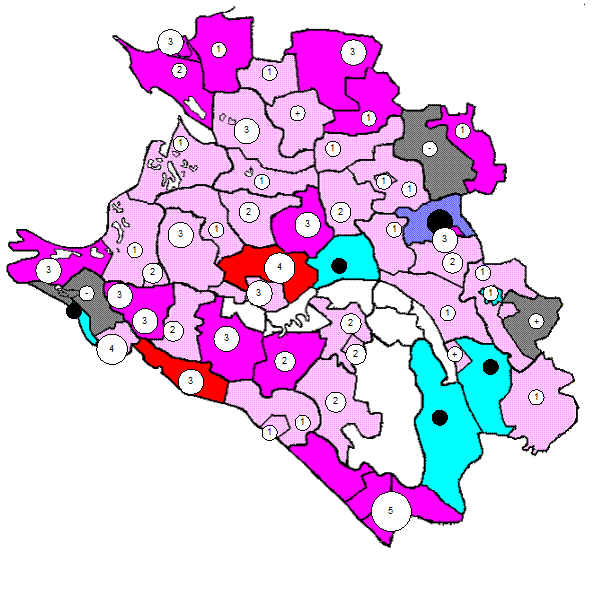Resistance to Home Rule
Once the bedrock of Irish resistance to the advance of the English state in Ireland, the Plantation of Ulster by Scottish and English colonists resulted in northern Ireland following a different economic, religious and cultural trajectory to the rest of the island. From the late 19th century, the majority of people living on the island of Ireland wanted the British government to grant some form of self-rule to Ireland. The Irish Nationalist Party sometimes held the balance of power in the House of Commons in the late 19th and early 20th centuries, a position from which it sought to gain Home Rule, which would have given Ireland autonomy in internal affairs, without breaking up the United Kingdom. Two bills granting Home Rule to Ireland were passed by the House of Commons in 1886 and 1893, but rejected by the House of Lords. With the passing of the Parliament Act 1911 by the Liberal Party government (which reduced the powers of the Lords from striking down parliamentary Bills to delaying their implementation for two years) it was apparent that Home Rule would probably come into force in the next five years. The Home Rule Party had been campaigning for this for almost fifty years. However, a significant minority was vehemently opposed to the idea and wished to retain the Union in its existing form. Irish Unionists had been agitating successfully against Home Rule since the 1880s, and on 28 September 1912, the leader of the northern unionists, Edward Carson, introduced the Ulster Covenant in Belfast, pledging to exclude Ulster from home rule. The Ulster Covenant was signed by 450,000 men, some in their own blood. Whilst precipitating a split with the unionist community in the south and west (including a particularly sizeable community in Dublin), it gave the northern unionists a feasible goal to aim for. By the early 20th Century, Belfast (the largest city in Ulster) had become the largest city in Ireland. Its industrial economy, with strong engineering and shipbuilding sectors, was closely integrated with that of Great Britain. Belfast was a substantially Protestant town with a Catholic minority of less than 30%, concentrated in the west of the city. A third Home Rule Bill was introduced by the Liberal minority government in 1912. However, the Conservative Party was sympathetic to the unionist case, and the political voice of unionism was strong in Parliament. After heavy amendment by the House of Lords, the Commons agreed in 1914 to allow four counties of Ulster to vote themselves out of its provisions and then only for six years. Throughout 1913 and 1914, paramilitary "volunteer armies" were recruited and armed, firstly the unionist Ulster Volunteer Force, and in response, the nationalist Irish Volunteers. But events in Europe were to take precedence: in what was to be the opening shot of World War I, Gavrilo Princip assassinated Archduke Franz Ferdinand of Austria in Sarajevo. Home rule was delayed for the duration of what was expected to be a short war and unionist and nationalist leaders agreed to encourage their volunteers to join the British army. The 36th (Ulster) Division, which was to suffer so severely at the Somme in 1916, was formed predominantly from the UVF. Nationalists joined in great numbers as well, with "old" Irish regiments from Munster and Leinster being greatly strengthened by these recruits.
|




